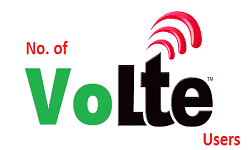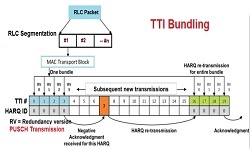Voice Codec Options for VoLTE Services
Voice Codec
The quality of Voice service plays and will play an important role in the evolution of telecommunication system. Voice subscribers are becoming habitual of Voice over IP (VoIP) services that provides extended audio bandwidth be it Skype or Whatsapp Calling. They also expect the same high quality from mobile voice services. With the maturity of LTE networks, devices and IMS services now operators are able to provide the VoIP like service quality and experience with HD Voice services over mobile network.
HD voice allows subscribers to communicate by using the wider audio bandwidth.This makes conversion more intelligible and natural, transparent and easy. It doubles the audio bandwidth compared to traditional telephony. Ever wonder what goes behind Quality of Voice? Answer is Codec/s.
A Codec convert an analog voice signal to digital encoded signal at transmitter and later decode digital version to analog at receiver. Codecs are designed for high quality and efficient coding of voice and enhanced packet-loss concealment for challenging radio channel conditions. Different codecs have different sound quality, required bandwidth and computation requirements.
Available Voice Codec and Data rate
Following codec are available for voice mobile services. Also to mention Enhanced Voice Service (EVS) codec is the latest one that has been introduced in 3GPP release 12.
- Enhanced Full-Rate (EFR)
- AMR Narrowband (AMR-NB)
- AMR Wideband (AMR-WB)
- Extended AMR-WB (AMR-WB+)
- Enhanced Voice Service (EVS)
| Codec Name | Year of Launch | Audio Bandwidth | Technology | Bitrates |
|---|---|---|---|---|
| Enhanced Full-Rate (EFR) | 1996 | Narrow Band | 2G | 12.2 Kbps |
| AMR Narrowband (AMR-NB) | 1999 | Narrow Band | 3G/4G | 4.72- 12.2 Kbps |
| AMR Wideband (AMR-WB) | 2001 | Wide Band | HD Voice in 3G/4G | 6.6 – 23.85 Kbps |
| Extended AMR-WB (AMR-WB+) | 2004 | Full Band | Full HD Voice in 3G/4G | 6-48 Kbps |
| Enhanced Voice Service (EVS) | 2014 | Super Wide Band and including all Above |
Super HD Voice in 4G | 5.9-128 Kbps |
The human audible frequency range is from 0 Hz to 20 KHz and audible band can be divide into different bands namely narrow band, Wide band etc. Picture below shows the theoretical bandwidths for Narrow band, Wide band, super wide band and Full Band.
The actual bandwidths in practical, may be narrower e.g. bandwidth is typically 300–3400 Hz for Narrow Band. The lower band is for natural sound, presence and comfort. The bandwidth in middle about 5000KHz is for natural voice, better understanding and voice recognition and high frequency for high quality music.
Article Submitted By: Vijay Sharma

Vijay is a IMS, Virtualization testing professional. He have many years of experience in working with VoLTE, LTE/4G, IMS node with major OEMs and ODMs in various roles



